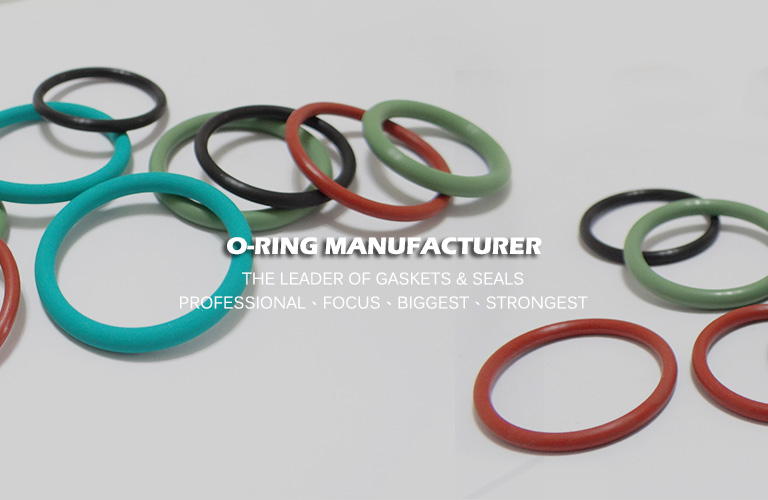Compound
EPDM
■ KTseal EPDM Compound:
※ Welcome orders of O-rings of international or other customized specifications
There is also information,Please swipe right
| KTseal mixture | Hardness | Color | Description |
|---|---|---|---|
| EP426 | 60 | Black | General purpose: cross-linking agent of peroxide. |
| EP425 | 70 | Black | General purpose: cross-linking agent of peroxide, brake application of automobile. |
| EP480 | 80 | Black | General purpose: cross-linking agent of peroxide. |
| EP419 | 70 | Black | General purpose: internal lubrication abrasion resistance; cross-linking agent of peroxide. |
| EP427 | 80 | Black | Aerospace: NAS 1613 revision; aircraft brake and hydraulic power station. |
| EP429 | 70 | White | ANSI/NSF 61; certified by FDA Food and Drug Administration (excluding cheese/fat foods). |
| EP430 | 70 | Milk white | Dezincification; cross-linking agent of peroxide, used in some chemical liquids subject to no pollution. |
※ A=Best B= Common C=Poor D= Not recommended
| EPDM O-Ring | |
|---|---|
| Common name or commodity | EPDM |
| Chemical name | Ethylene propylene diene monomer |
| ASTM D1418 Nomenclature--→ | EPDM |
| ASTM D2000 SAEJ200→ Type. class | AA,BA,CA |
| Material properties | |
| Density(gm/cm3) | 0.86 |
| Hardness range(Shore A) | 30-90 |
| Gas permeability | C |
| Electrical resistance | A |
| Odor | B |
| Taste | B |
| Stain resistance | B |
| Stickiness | B |
| Mechanical properties | |
| Tensile strength (max psi) | 3,000 |
| Friction resistance | B |
| Deflection resistance | B |
| Tearing resistance | C |
| Impact resistance | B |
| Deformability | B |
| Elasticity | B-A |
| Rebound resilience | B |
| Stress relief | C-B |
| Thermal properties | |
|---|---|
| Recommended max. application temperature (℃) | 150 |
| Low-temperature toughness | B |
| Thermal aging resistance | A |
| Flame resistance | D |
| Resistance to following elements | |
| Weather | A |
| Oxygen | A |
| Ozone | A |
| Radiation | B |
| Water | A |
| Vapor | A |
| Alkali (dil/conc) | A/A |
| Acid (dil/conc) | A/A |
| Oil, gasoline, kerosene | NR |
| Benzene, hydrocarbon water | NR |
| Animal and vegetable oil | B |
| Oxidizing solvent | B-A |
| HALOGEN solvent | NR |
| Alcohol | B-A |
| Synthetic lubricating oil | NR |
| Hydraulic circulation: | |
| Silicate | B-A |
| Phosphate | C |
■ Note
- The higher the density, the more rubber material used. For example: although the unit price of neoprene is the same with natural rubber, but it's actually still very expensive.
- Sometimes the tensile strength is not important, but unchanged tensile strength during temperature rise means other mechanical properties can also remain unchanged.
- There is a wide range of temperature and friction mode for friction resistant application (e.g. scraping and colliding).
- High fracture resistance means good durability, and such property is required when physical abuse is expected.
- When physical abuse is expected to occur, tearing resistance must be accompanied by fracture resistance.
- During strong deformation, only stress-induced crystallization rubber has good durability, and low temperature curvature can also help to improve the impact resistance.
- Generally, high deformability means high fatigue resistance under deflection state.
- The less the permanent deformation, the better the structural integrity, the more it can maintain its original size.
- The better the elasticity, the less the internal heat increase in deflection or dynamic condition.
- The better the creep resistance, the longer the service life of products (especially when the product clearance must be kept constant).
- Stress relief is necessary for sealing or other frequently stressed products.
- For most of vibration buffering devices, good low temperature flexibility is necessary, and the initial swing and subsequent softness are more important.
- Oil resistance is the most important surface effect, and deterioration will not occur due to exposure in oil when the oil resistance is poor but volume is large enough.


